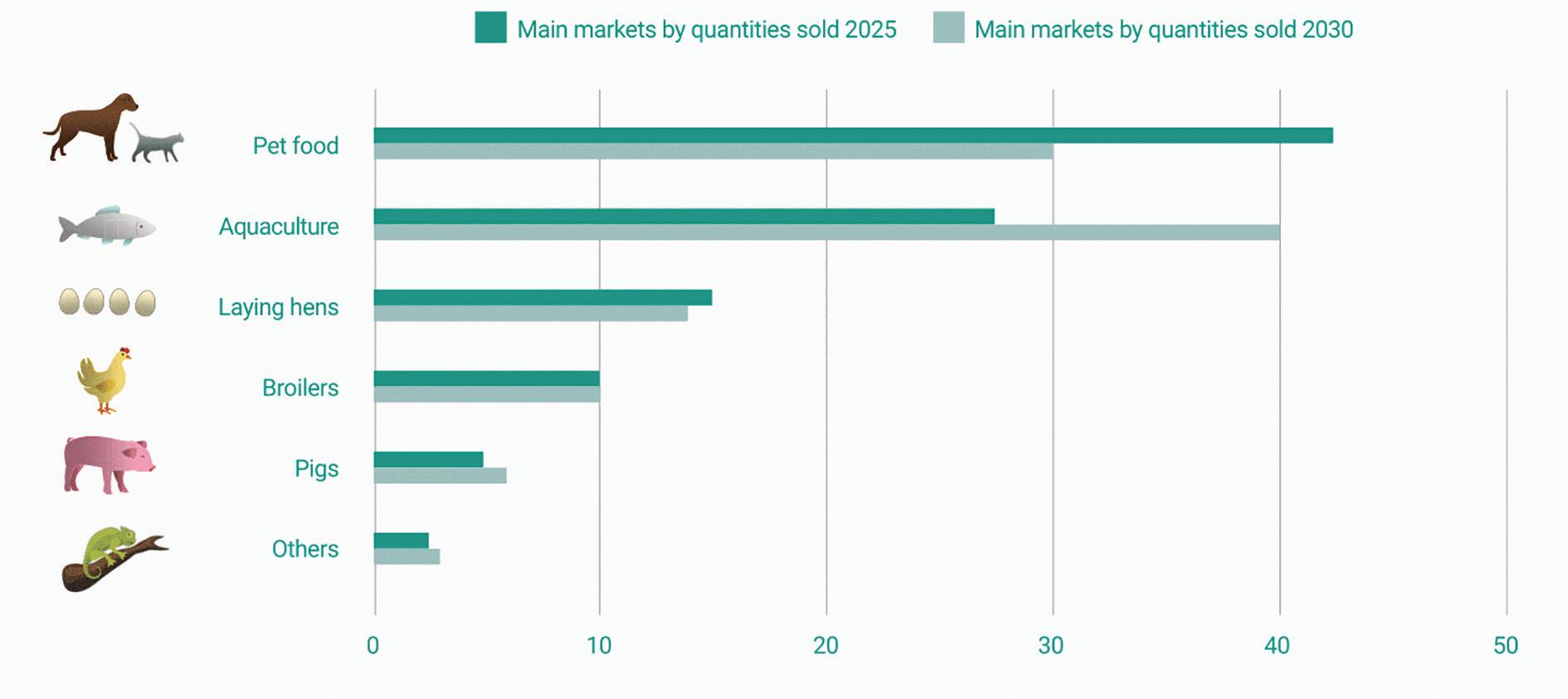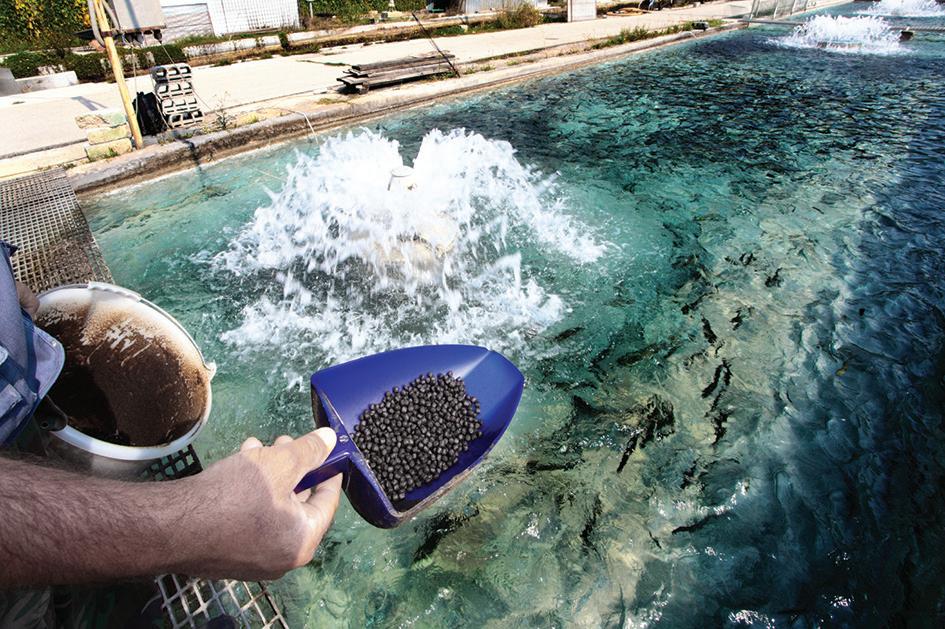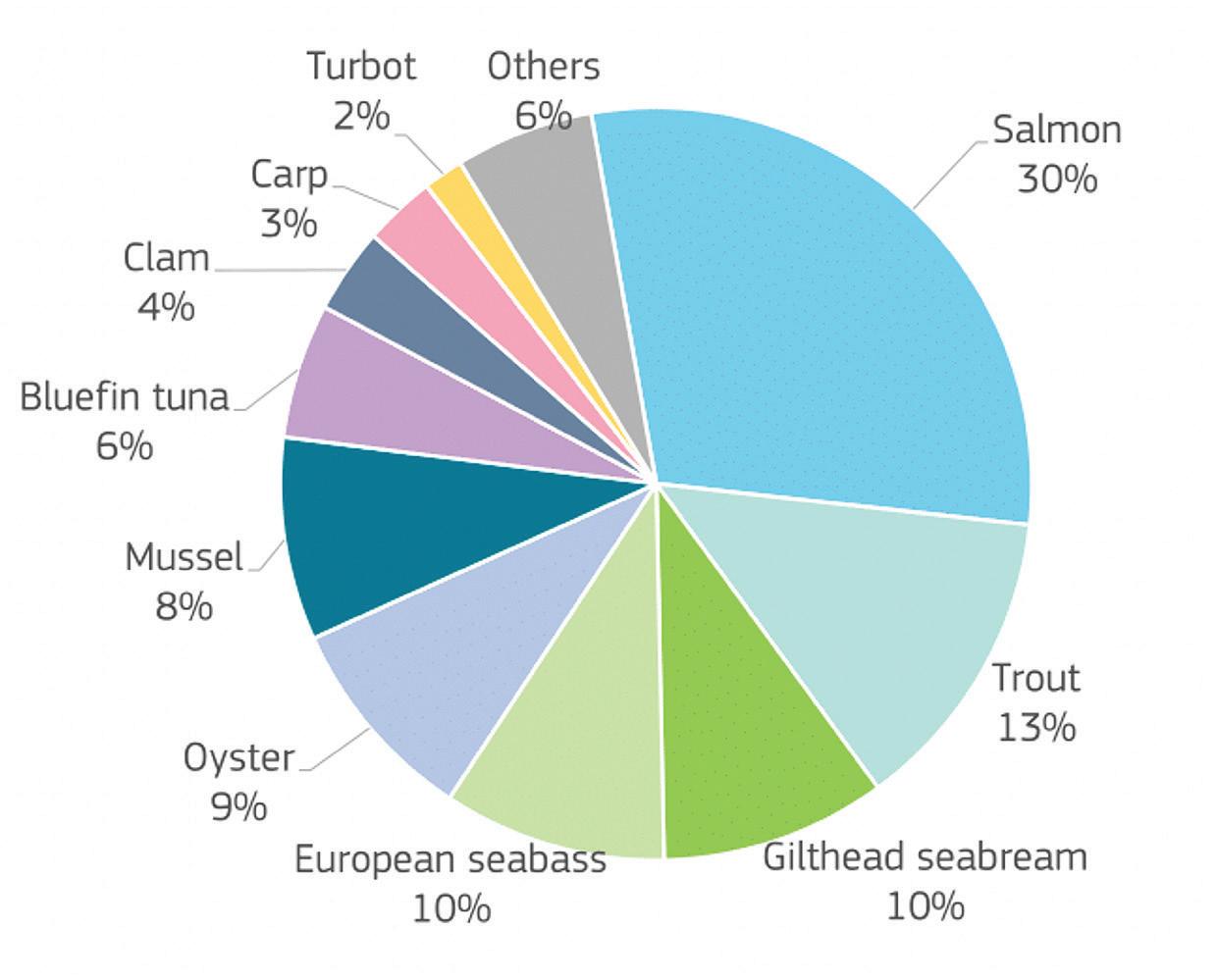
7 minute read
Insects as aquafeed ingredients: Opportunities and trends
Pressured by the need to feed two billion more people globally in line with the limits of the planetary boundaries by 2050, it is clear that food production systems have to undergo a complex transformation. The aquaculture sector already started this process - from production systems that focus on reducing the environmental impact of fish farming to business models that embrace the principles of circular economy, this decade offers exciting opportunities for fish farmers. But does European aquaculture have the right ingredients to deliver? With increasing pressure on natural resources, novel feed ingredients such as insects offer new avenues for growth. This innovation is also recognized by a recent roadmap for the upcoming decade published by the European Commission, called the Strategic guidelines for a more sustainable and competitive EU aquaculture. Throughout this article, we will provide a concise overview of the latest developments and upcoming trends regarding the incorporation of insect-derived ingredients into aquafeed.
Why insects? Insects are nutritious and healthy
According to the scientific literature, diets including proteins derived from insects in the feed ratio show similar or better performance to commonly used aquafeed. Generally, insect meal is used as a complementary ingredient or partial replacement of the main protein-rich ingredient (e.g. fishmeal, soybean meal, etc.) with proven nutritional benefits even at low inclusion levels. Having an adequate essential amino acid profile, insects also contain bioactive compounds that enhance the immune function of the target animal, improving health and welfare indicators. Such topics represent a key priority for the scientific community,
Figure 1. The main markets for insect feed products by share (%) of quantities sold (2025 vs 2030). Source: An overview of the European market of insects as feed (IPIFF - April, 2021).
as preliminary evidence indicates that their use as functional ingredients could be beneficial in reducing the use of synthetic antimicrobials.
Insects are part of the natural diet of numerous fish species
A wide range of fish species, such as salmon or trout, have developed their aerial feeding behavior in order to consume non-aquatic protein-rich invertebrates, with insects representing a high share. This confirms that the inclusion of insects into the diet of fish is not only sustainable and nutritious but also aligned with the food such fish species would consume in nature.
Being farmed locally, insects foster the transition towards sustainable circular business models
Insects are reared on a wide range of underused agri-food by-/co-products, that are efficiently and safely bioconverted into proteins, lipids and fertilizer (insect frass). Thus, the local production of such feed ingredients not only strengthens agri-food circularity but also improves regional feed self-sufficiency. This element is of crucial importance in making supply chains more resilient, as the experience from the disruptions caused by the COVID-19 pandemic reflects the need to reinforce short supply chains. From an economic standpoint, the collaboration between insect producers, feed manufacturers and fish farmers could also safeguard aquaculture from strong economic turbulences caused by fluctuations on the international market.
What do we mean by “insects”?
While in nature fish species feed on a wide range of invertebrates, only some insects are reared to be transformed into feed ingredients (more information on the IPIFF website). Thanks to their nutritional and zootechnical benefits (i.e. amino acid profile, digestibility, immune-boosting properties, animal health and welfare indicators, etc.), these species are among the insects with the highest potential to be incorporated in animal feed. In addition, up to now, the knowledge of their biological life cycle indicates that they are among the most suitable insect species for insect farming. So far, proteins derived from eight species are authorized under the European Union (EU) legislation, with black soldier fly and yellow mealworm being the most frequently used. “Following the authorization of insect proteins in aquafeed (i.e. in July 2017 - Regulation (EU) 2017/893), aquaculture rapidly became the main market for the European insect farmers active in the production of feed ingredients for farmed Christophe Derrien, animals,” said Christophe secretary-general of the Derrien, secretary-general of International Platform of Insects for Food and the International Platform of Feed (IPIFF). Insects for Food and Feed (IPIFF). According to a survey conducted in 2021, this trend is likely to continue in the coming years (Fig. 1), with insects produced for the aquafeed market expected to surpass the quantities targeting the pet food market by the end of the decade. “Most commonly, aquaculture feedstuffs containing insects are used for the nutrition of salmon, trout, seabream or seabass, species that represent more than 60% of the value of EU aquaculture products,” Derrien said (Fig. 2).
In addition, building on numerous studies and trials, there is growing interest in incorporating insects into the feed ratio of aquaculture species such as shrimps, tilapia, sturgeons and others (references available on request). Major aquaculture feed producers already developed aquafeed that rely on insects and their derived ingredients - with several aquaculture products already on the shelves of European supermarkets.
Concluding remarks: 15 years left to strengthen synergies in fish farming
The diversification of the ingredients used in aquaculture is seen as a key enabler for the growth of this sector. While the production of ingredients derived from forage fish decreased in the past two decades, statistics indicate that a growing share of plant-based ingredients were used in feed formulations instead. However, the incorporation of ingredients of vegetal origin posed nutritional challenges for some aquaculture species, mostly due to the presence of antinutritional elements. There are also other issues – the insufficient agricultural land available for the expansion of crop farming and criticism linked to the use of plantbased ingredients farmed on allegedly deforested land in aquafeed reflect some of the concerns of consumers.

On the other hand, projections indicate that forage fisheries will reach ecological limits by 2037.
This means that, while traditionally used feed ingredients will remain relevant feed for numerous aquaculture species, we have less than 15 years to accelerate the development of innovations and facilitate their use across Europe and beyond. However, as it was recently reported that already an additional 37.4 million tons of aquafeeds will be required by 2025 (Hua et al., 2019), we might have even less time.
New feed ingredients are thus urgently needed to support the growth of fish farming. Yet, insects alone cannot fill this gap in such a short time. A synergetic approach is necessary, building on the complementary properties of traditionally used ingredients (e.g. marine or plant-based) and those referred to as “alternatives” (insects, algae, fermentation products, single-cell proteins, etc.). Farmed fish is nutritious and provides quality animal protein that brings health benefits for humans. Yet, responding to consumer demand and expectations remains imperative in the context of the
misinformation against the aquaculture sector spread in the online environment. The use of alternative proteins, such as insects, could be an opportunity to improve communication between farmers and citizens, highlighting best practices and the high level of environmental compliance. Markets that currently represent a niche, such as organic aquaculture, could also offer new opportunities for insect and fish farmers alike. Insect farming brings valuable solutions to support the growth of organic fish farming, without increasing the proportion of marine products that have a high impact on biodiversity. Yet, to facilitate that, robust and workable standards will have to be put in place at the European and Figure 2. Composition of EU aquaculture production by main commercial species (in international levels. While the European value). Source: The EU fish market EUMOFA - November, 2021). Commission presently works on developing such standards, IPIFF called for the inclusion of non-organically produced insect-derived ingredients into organic aquaculture feed prior to the establishment of EU organic certification standards for insects as feed (more information in the IPIFF Contribution Paper on organics). Photo credit: Protix Since the EU authorization of insect proteins in aquafeed in 2017, the insect sector learned numerous lessons. As concrete commercial partnerships become more visible in several EU member states, IPIFF members anticipate that the aquaculture market will remain one of the main targets for insect feed producers. By the end of the decade, it was forecasted that “more than 10% of the fish consumed in the EU (the equivalent of circa 30 servings for each European) will be derived from fish farms that use insect protein in their aquafeed formulations” (IPIFF - April, 2021). You might have already eaten insect-fed fish! References available on request.
More information: Constantin Muraru
Communication and Research Manager International Platform of Insects for Food and Feed (IPIFF) E: info@ipiff.org











